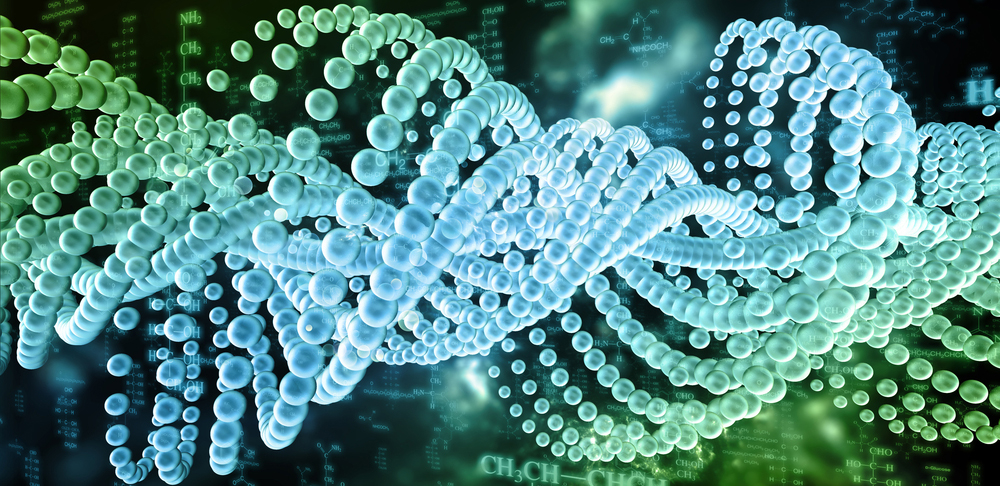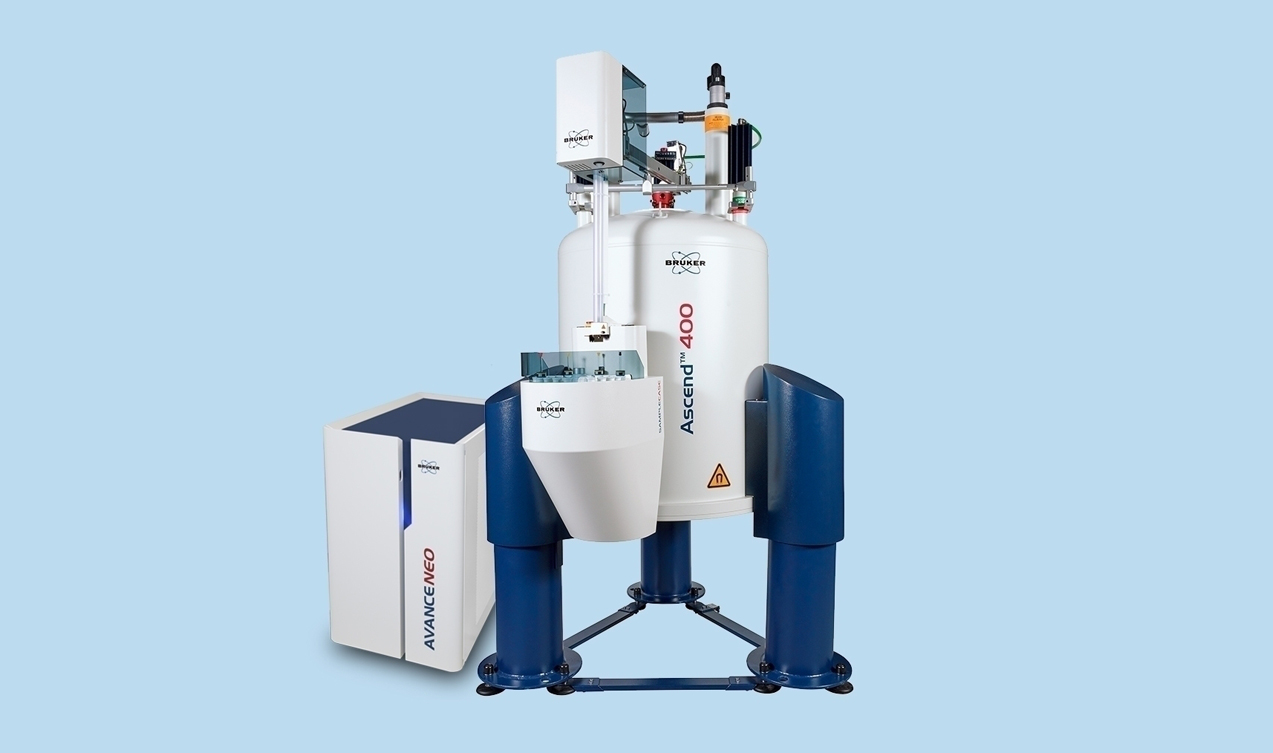

タンパク質のアロステリーとNMR
Allostery – the phenomenon by which an event in one part of a molecule causes an effect in another – is a key feature of protein regulation in all living cells. Rather than directly affecting a protein’s active site, allostery can modulate the active state of a protein through ligand binding, covalent modification or mutation elsewhere in the protein.
This can change the tendency of the protein to bind certain ligands or alter its catalytic effects, and result in a shift in the equilibrium of protein conformations within a population. In biological processes allostery is involved in signal transduction, metabolism, enzyme activation and gene regulation.
However, despite the ubiquity of the phenomenon in biology and a 50-year quest to uncover how it works, still relatively little is known of the mechanisms by which allostery actually functions.
Communication networks
The current model of allosteric signaling within protein structures involves amino acid residue networks that are able to communicate with each other over long molecular distances, analogous to a telecommunications network. Early research was able to identify allosteric sites that were physically linked with active or second sites, and could induce conformational changes in the protein. But given the long distance over which these signals are able to communicate, it is clear that dynamically coupled residues play as much of a role in allosteric processes as physically coupled residues. Indeed, many allosteric interactions occur with imperceptible or no structural change at all.
Recent research using high-throughput experimental and computational methods has been able to identify allosteric binding sites and residue networks, but there are challenges. For example, these require a detailed prior structural and functional knowledge of the protein. Furthermore, the dynamic processes involved in allostery cover a very large timescale ranging from picoseconds to milliseconds, which can be difficult or impossible to capture with existing methods. And even a small shift away from the protein’s native state within a population can have a large impact on function, but these subtle changes may not be detectable by methods such as X-ray.
Over the last decade, nuclear magnetic resonance (NMR) spectroscopy has emerged as a technique that can overcome many of these obstacles. As well as being able to provide structural information on proteins in solution, NMR can also reflect dynamic processes across a broad timescale, and in sparse populations of conformational states. Thus it can detect allostery that would be difficult or impossible to identify using other methods.
Drawing the map
In a study in Scientific Reports, researchers led by Peter Wright at the Scripps Research Institute, La Jolla, California, demonstrated a method that uses NMR to identify allosteric communities and characterize the information flux between them.
The team used a eukaryotic kinase, p38γ MAPK, to carry out their experiments. The allosteric sites of this family of enzymes have been well characterized, but it is unknown how the regulatory sites communicate with catalytic residues. To explore this, the researchers mutated methyl-containing side chains within the protein at 20 specific sites. The effects of these mutations perturbs the allosteric network within the protein, which can be measured via changes in 1H-13C methyl chemical shifts.
Using triple-resonance NMR and network analysis approach, the team were able to develop a map showing communication paths between regulatory elements and catalytic sites. Because the method allowed them not just to look at the overlap between the different elements of the network, but the information flux between them, the team could demonstrate the functional importance of the various pathways. In this way, they identified critical nodes, with both a high level of connections and the greatest level of information flowing between them, which corresponded to known allosteric sites in the 3D structure, despite no structural information being needed as input.
The researchers say that the method will be valuable in future experiments, including for drug discovery, by delivering an information-rich and direct view of allosteric networks within proteins.
An advanced system
In their experiments, the researchers used Bruker Avance 750 and 900 MHz spectrometers equipped with triple-resonance gradient probes.
The Bruker Avance III HD offers fast, flexible NMR with the most advanced RF generation in the industry. And, Bruker’s Triple Resonance Probes are extensively used in experiments to determine the structure of macromolecules with NMR, delivering both performance and flexibility, including access to advanced NMR techniques.
References
アロステリーとは分子の一部が他の部分に影響を及ぼす現象であり、すべての生存細胞内のタンパク質制御の重要な特性です。アロステリーはタンパク質の活性部位に直接影響を及ぼすのではなく、リガンド結合、共有結合修飾またはタンパク質のどこかの部位の突然変異によって、活性状態を調節します。
これによって、あるリガンドへのタンパク質の結合傾向やタンパク質の触媒作用が変化し、集団内のタンパク質立体構造の平衡状態の変化が生じます。生体プロセスにおいてアロステリーはシグナル伝達、酵素活性化および遺伝子制御に関与します。
しかしながら、生物学における普遍的な現象として、50年にわたってその機能を解明する努力が払われてきたにもかかわらず、アロステリーの実際の機能のメカニズムに関する知見は未だに比較的少ない状況です。
コミュニケーション・ネットワーク
タンパク質構造内のアロステリックシグナル伝達の最新のモデルは、分子の全長にわたって相互にコミュニケーションが可能なアミノ酸残基ネットワークで構築されており、通信ネットワークに類似しています。初期の研究によって、活性部位または第2の部位と物理的に結合したアロステリック部位を特定し、タンパク質の立体構造変化を引き起こすことができました。しかし、これらのシグナルが伝達可能な距離が長いことから、アロステリックプロセスでは動的に結びついた残基が物理的に結びついた残基と同様に重要な役割を果たすことは明らかです。実際に、構造の変化がわずかであるか皆無であっても、多くのアロステリック相互作用が生じます。
ハイスループットな実験法および計算法を用いた最近の研究によって、アロステリック結合部位および残基ネットワークが特定されましたが、課題も存在します。たとえば、特定にはタンパク質の構造および機能に関する過去の詳細な知見が必要です。さらに、アロステリーに関与する動的プロセスはピコ秒からミリ秒までの非常に広い時間範囲に及ぶので、既存の方法によって捉えることが困難であったり、不可能な場合があります。集団内のタンパク質が天然状態からわずかに変化しただけで機能に大きな影響が生じる可能性がありますが、このようなわずかな変化はX線などの方法では検出できない場合があります。
過去10年間に、核磁気共鳴(NMR)法がこれらの障害の多くを克服する手法として浮上してきました。NMRでは溶液中のタンパク質の構造に関する情報が得られるとともに、広い時間範囲に及ぶ動的プロセスや集団のごく一部の立体構造状態も反映されます。したがって、NMRは他の方法では特定が困難であったり、不可能なアロステリーを検出することができます。
マップの作成
Scientific Reportsに発表された研究で、スクリプス研究所(カリフォルニア州ラホヤ)のPeter Wright氏が主導する研究チームが、NMRを利用してアロステリック・コミュニティを特定し、それらの間の情報の流れを解明する方法を明らかにしました。
研究チームは、真核生物のキナーゼp38γ MAPKを使用して実験を行いました。この酵素ファミリーのアロステリック部位は十分に解明されていますが、制御部位が触媒残基とどのようにコミュニケーションするかは不明です。これを解明するために、研究チームは、タンパク質内の20ヵ所の特定の部位のメチル基を含む側鎖に突然変異を生じさせました。これらの突然変異は、タンパク質内のアロステリック・ネットワークの乱れを引き起こし、これは1H-13C メチルの化学的シフトによって測定できます。
三重共鳴NMRおよびネットワーク解析アプローチを用いて、研究チームは、制御要素と触媒部位の間のコミュニケーションを示すマップの作成に成功しました。この方法では、ネットワークの異なる要素間の重複だけでなく、それらの間の情報の流れも確認できるので、研究チームは様々な経路の機能的重要性を明らかにすることができました。そうして、インプットとして必要な構造の情報がないにもかかわらず、三次元構造内の既知のアロステリック部位に相当する重要な節点(高レベルのコネクションと、その間の最大レベルの情報の流れの両方)を特定しました。
研究チームは、この方法によって、タンパク質内のアロステリック・ネットワークについて情報量の多い直接像が提供され、今後、創薬などのための実験に役立つと述べています。
先進システム
この実験で、研究チームは、三重共鳴グラジエントプローブを備えたブルカーAvance 750および900 MHz分光計を使用しました。
ブルカー AvanceIII HDでは、業界で最先端のRF生成能力を持つ高速で柔軟なNMRを実施できます。また、ブルカー製の三重共鳴プローブはNMRによって高分子の構造を決定する実験に広く用いられており、性能と柔軟性の両方を備え、先進的なNMR法にも利用できます。
参考文献
- Aoto PC, Martin BT & Wright PE. NMR Characterization of Information Flow and Allosteric Communities in the MAP Kinase p38γ. Scientific Reports 2016; 6: 28655.
- Goodey NM & Benkovic SJ. Allosteric regulation and catalysis emerge via a common route. Nature Chemical Biology 2008; 4: 474-482.
- Kern D & Zuiderweg ERP. The role of dynamics in allosteric regulation. Current Opinion in Structural Biology 2003; 13: 748-757.
- Tsai C-J & Nussinov R. A Unified View of “How Allostery Works”. PLoS Computational Biology 2014; 10: e1003394.
- Tzeng S-R & Kalodimos CG. Protein dynamics and allostery: an NMR view. Current Opinion in Structural Biology 2011; 21: 62-67.

